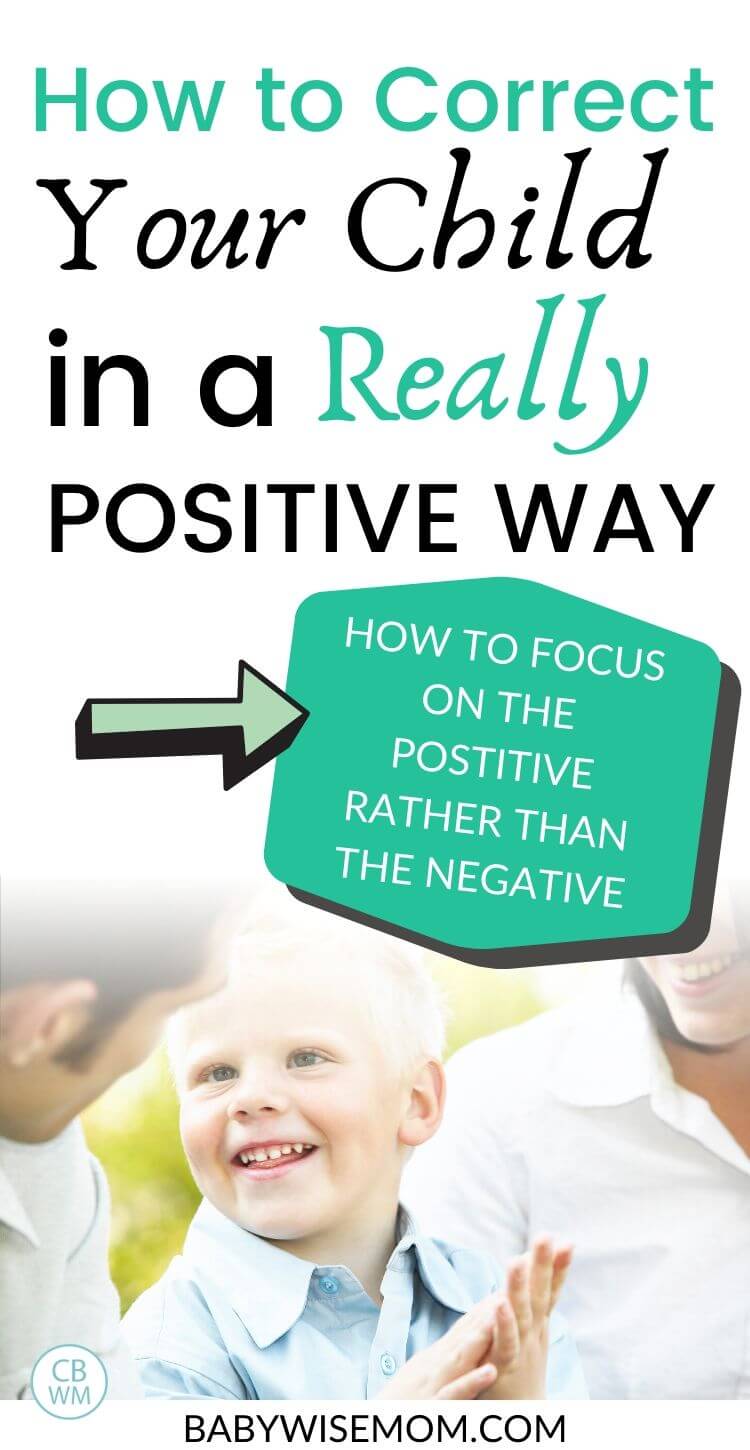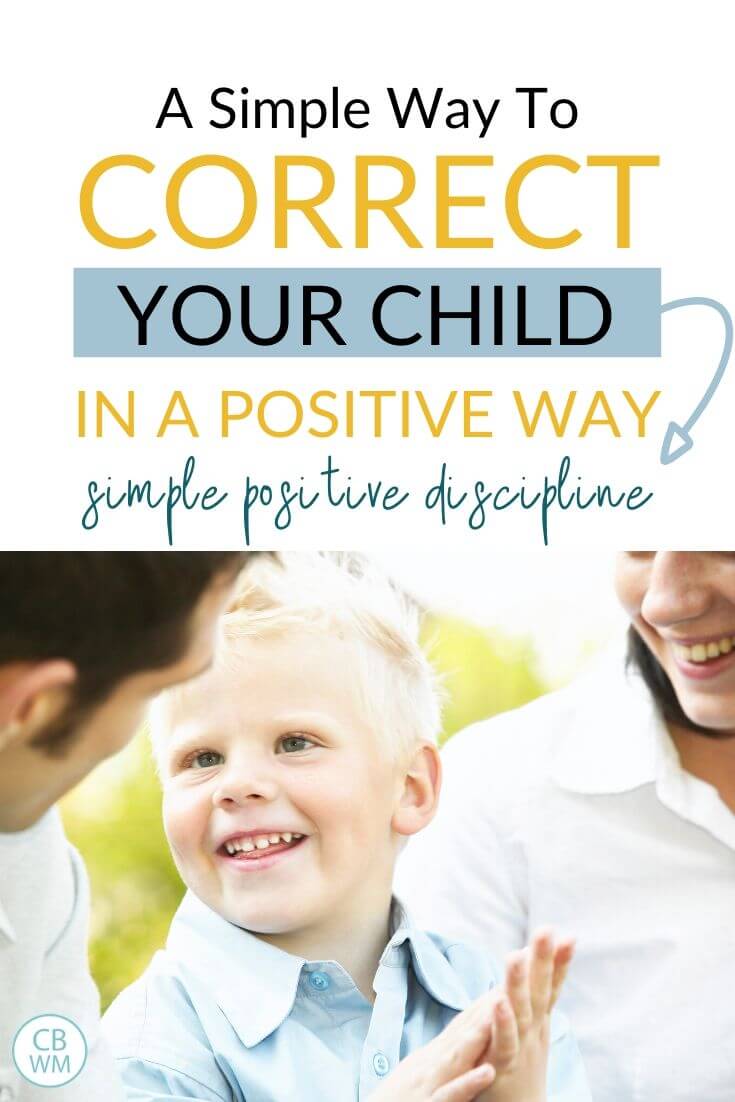Use this simple trick to use positive discipline to get your child to obey and understand what you are wanting him to do.

Correcting children in a positive way, or using positive discipline, sounds very nice and happy, but it isn’t always easy to think of ways to be nice and happy when your child has done something she shouldn’t.
On Becoming Preschoolwise has an excellent suggestion for correcting your children in a positive way.
“As often as possible use the negative of the virtue, not the negative of the vice”
On Becoming Preschoolwise (page 178)
Sound confusing? Let me clear this up for you.
Using the Negative of the Virtue
Basically, when you use the negative of the virtue, it means you correct your child by using the word you want them to do.
Did your child lie to you? Instead of saying, “You lied to Mommy” you would say, “You didn’t tell Mommy the truth.”
So instead of saying “lie” (what you didn’t want to happen), you used the word “truth” (what you did want to happen).
Get it?
Other examples of things you would say:
- “That was not nice” instead of “That was rude.”
- “Keep your hands to yourself” instead of “don’t hit.”
- “Walk in the house” instead of “Don’t run.”
Read: Using Encouragement as a Discipline Tool

Why Use the Virtue
Why is manner of speech this important?
Preschoolwise points out that preschoolers are gaining such a large vocabulary. The words they hear daily are going into their little heads and will come out of their little mouths.
This got me thinking. Our children mimic us. They talk like us, walk like us, roll their sleeves up like us…they want to be just like us.
So the words we say to them will soon be said to others. While certain phrases don’t necessarily sound bad coming from an adult for some reason, when you hear it coming from your child, it puts that word in a new perspective.
I remember when my children were 4, 2, and 10 months. Something I said a lot was “Dang it.”
Well, that isn’t so bad. It is better than other alternatives out there.
But when my sweet little two year old Kaitlyn said, “Dang it!”, it startled me and made me think about it. It didn’t sound so good coming from her lips. In fact, I didn’t like it.
The words we say as parentse will be repeated–and with gusto.
Imagine your sweet Bobby playing at the park with Billy. Billy gets in front of him and goes down the slide first.
Would you rather hear, “That was rude!” or “That wasn’t nice!” come from little Bobby?
Imagine your child’s voice. I am guessing most parents will prefer the latter phrase.
That will only happen if you model it.
Your children soak up your instruction like little sponges, even when you don’t really think they are paying much attention.

I remember one day hearing three year Brayden explaining to Kaitlyn that she needed to share something with him because that would show love and it is important to show love to your family members.
Brayden responded very positively to me when I talked about showing love in that way, but it was surprising for me to hear him explaining the situation to his little sister.
Another benefit of stressing the positive of virtue as a good idea is it tells the child what to do rather than just what not to do.
“Don’t be noisy!” is not as clear to a child as “Be quiet!”
Children lack so much life experience. Adults can hear an instruction and be able to apply past learning and do what is really wanted.
Children don’t have that. They also don’t have as large of vocabulary and opposites are not always obvious. We literally practice opposites with children so they can learn to identify them. We can’t expect them to understand the opposite of every word we say.
So you tell a child “Don’t yell”, she doesn’t know that the opposite to that is to be quiet. She knows not to yell. She doesn’t know it isn’t okay to not talk really loudly or to sing at the top of her lungs.
Read: Teach Kids What Obedience Looks Like
Conclusion
This simple trick really helps set your little one up for success. You want your kid to behave a certain way, so why not just help him out and tell him what that is rather than tell him one thing not to do and expect him to know what it is he should do.
Give it a try the next time you are correcting your child and see how it goes.
Related Posts
- 8 Ways To Use Positive Reinforcement for Good Behavior
- Discipline 101: The Basics of Correcting Children
- Why Teach Virtue
- Teaching Virtue and the Importance of You
This post originally appeared on this blog in February 2010
